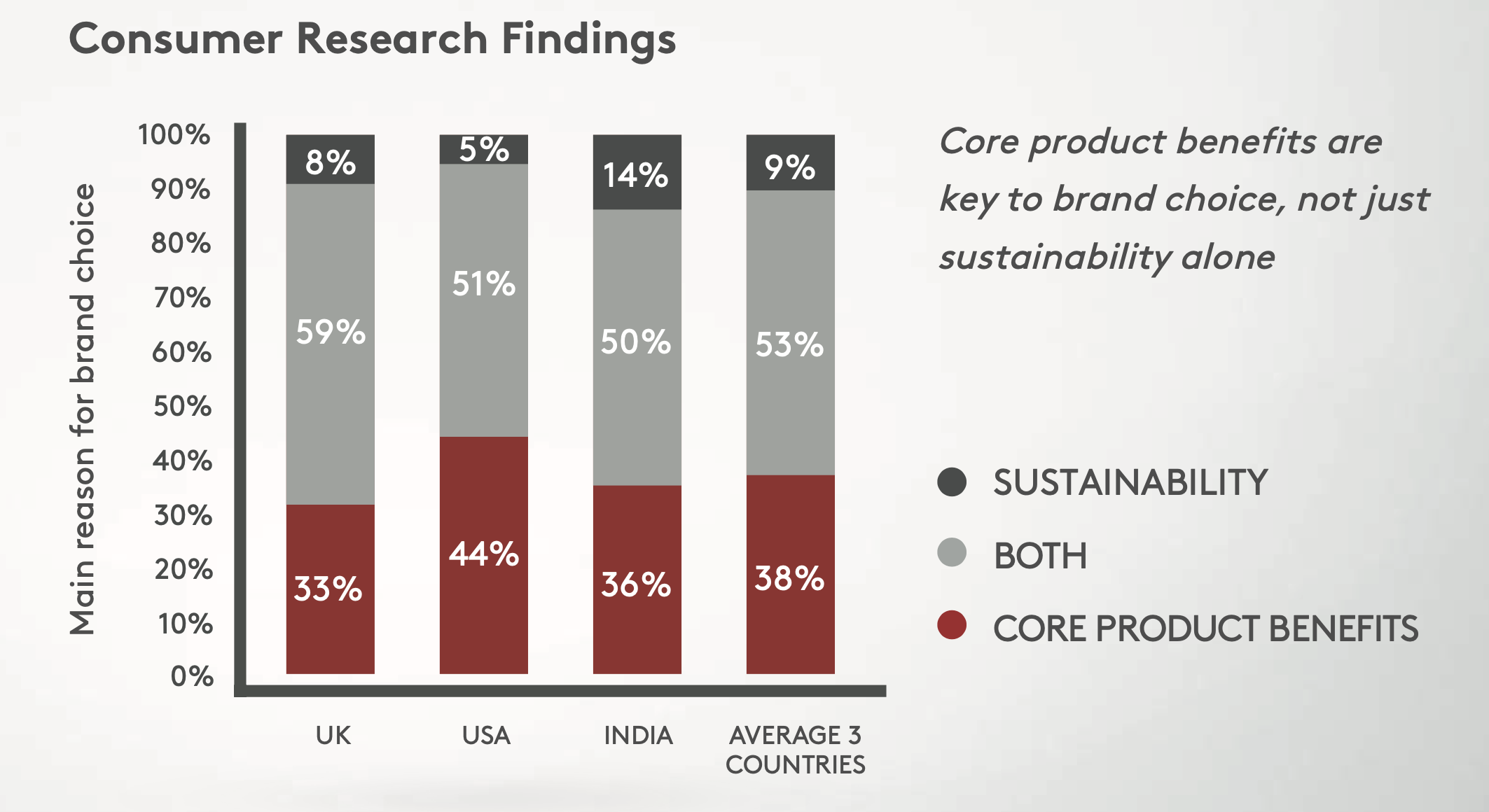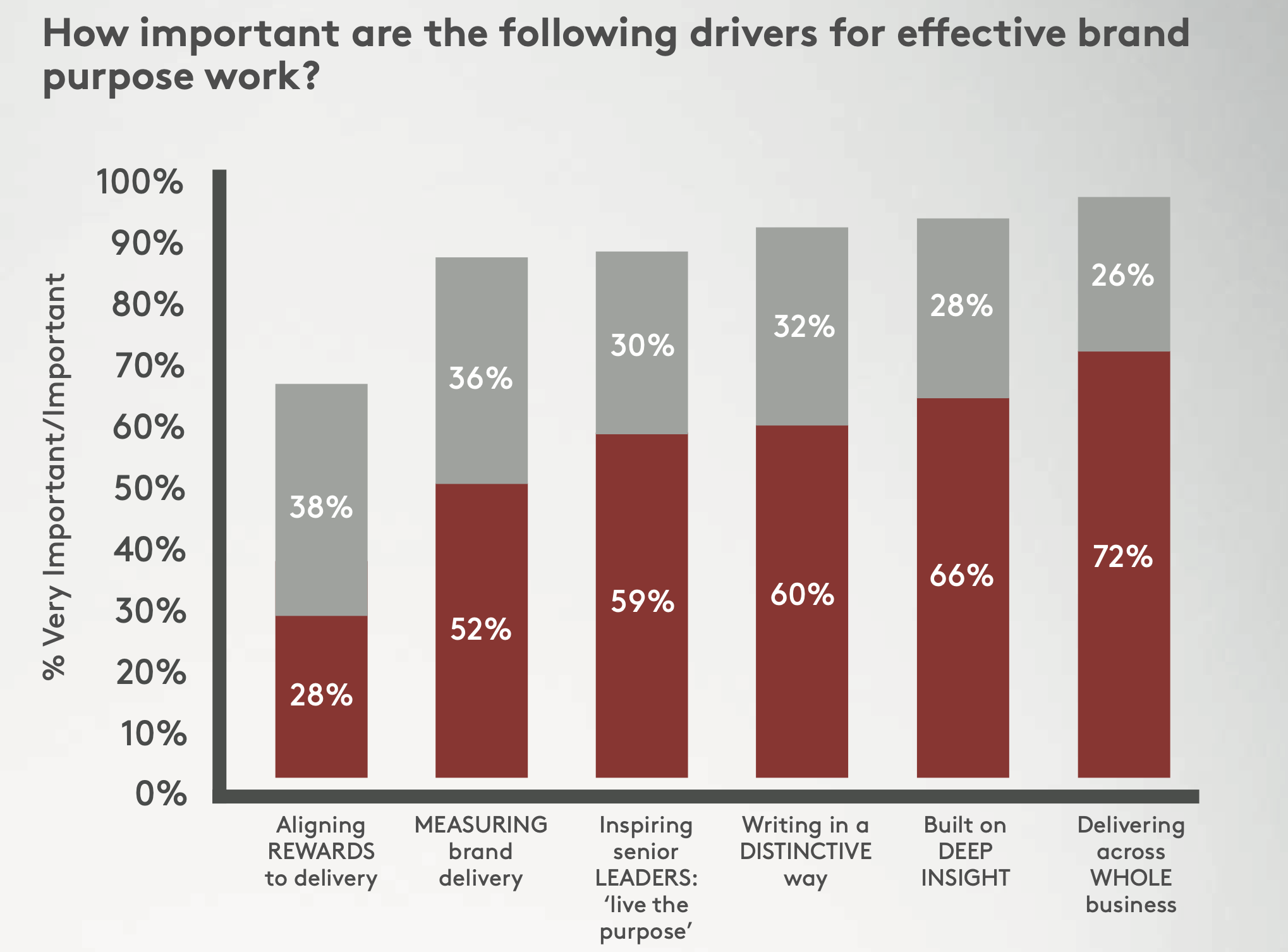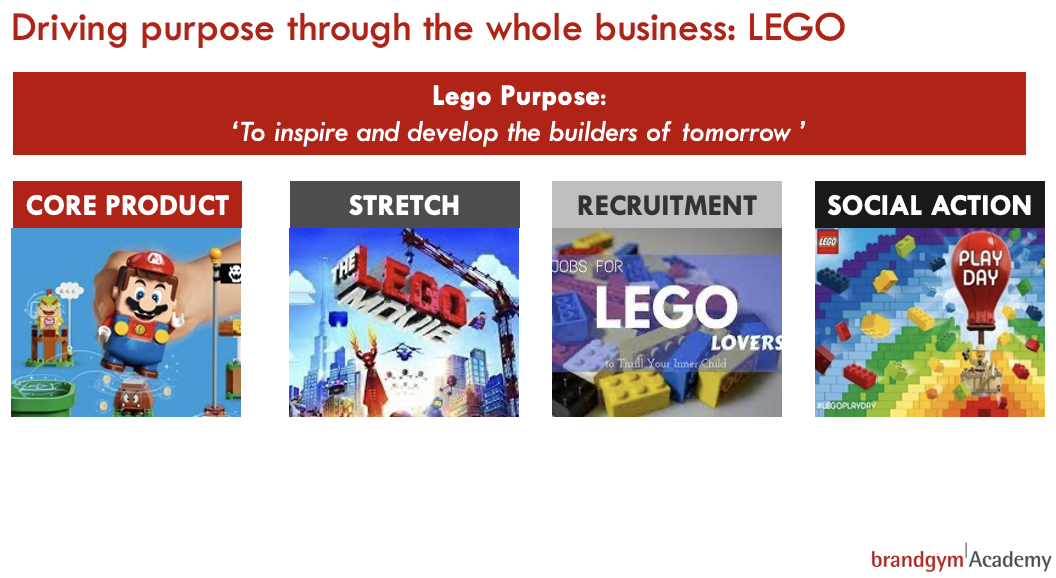Making brand purpose work at work
“Give your work a genuine purpose” was the attention grabbing headline in a Times article I read this week (1). “Before the pandemic, ‘purpose’ was voted as the business buzzword of the year“, the article reports. “Fast-forward to 2024 and purpose is now an integral part of British business.” However, many attempts to make business more purpose-driven are failing to fully deliver. Only half of marketing directors say that brand purpose had been effective/highly effective at inspiring and guiding business growth, according to our brandgym research. If you plan to follow the advice of The Times and try to be more purpose-driven, how can you increase your chances of success?
1. Root your brand purpose on your product
The Time piece is another in a very long line of articles that define purpose too narrowly to focus only on environmental, social and corporate governance (ESG). This limits the role that brand purpose plays and risks neglecting the core business.“Brand purpose does not equal CSR (corporate and social responsibility). There’s often confusion about this”, observed one marketing director in our brandgym research.
My recommendation is to root your brand purpose firmly in the benefits of your core product or service, not just sustainability of people and planet. Why? Only 9% of consumers surveyed in the UK, USA and India state sustainability alone is key to brand choice. Core product benefits alone are key for c.40%, with a further c.50% saying BOTH core product benefits and sustainability are key. In other words, the core product is still key for 9 out of 10 consumers.
Rooting purpose in the core product, not just people & planet, ensures a tight link to business reality. This is reflected in our definition:
The distinctive role a brand plays in improving everyday life that inspires business growth.

2. Make sure people know your purpose!
The most shocking stat in the Times article is that whilst 86% of employees say their organisation has a purpose statement, a whacking 42% don’t know what it is, according to research by EY! So, at the most basic level, there is a big job to do on simply communicating the brand purpose to people.
A watchout here is that the focus in driving awareness should be through actions, more than words. The leaders of the business need to demonstrate the purpose in their behaviours and decisions, not just talk about them. The business benefits of this approach are confirmed by Kantar research: 80% of ‘over- performing’ companies link everything they do to a clear purpose vs. only 32% of under-performers.
3. Drive purpose through the whole business
It is one thing to define a brand purpose and tell people about it. However, the key for purpose to be effective is to “brand and deliver”. Driving brand purpose through the whole business is the key driver of effectiveness in our brandgym research (see below). Many companies are failing to do this, as shown but research quoted in The Times article. While 84% of employees feel that it is important to work for an organisation that positively affects society, 71% say their leaders make decisions solely based on profit. This sort of disconnect between what leaders say and what they do is a form of “brainwashing” that creates cynicism amongst employees.

4. Making purpose work at work: Lego
Lego is a good example of driving their brand purpose, To inspire and develop the builders of tomorrow, through the whole business.
This includes exciting new products such as the licensed Harry Potter and Star Wars ranges, strategic stretch into movies with The Lego Movie and a recruitment processes that includes building with Lego.
Lego’s sustainability efforts are linked to the core product and help sell more stuff by driving product trial. For example, LEGO Play Days provide a day of fun and games for hundreds of children in need and their parents, using Lego bricks. And Build the Change encourages children to express their hopes and dreams for the future with Lego bricks and other creative materials, plus their own imagination.

In conclusion, brand purpose will have a better chance of paying off with growth if you root it in your core product and then drive it through the whole business
We explore BRAND PURPOSE in depth on the brandgym Mastering Brand Growth program, as part of a practical 8-step program for creating brand strategy to inspire business growth. It combines world-class, on-demand content and live Zoom workshops, with 98% of participants saying they “will be more effective in their jobs”.
To get our latest research paper Making Purpose Pay, just pop your email in the form.
And for more on brand purpose also see this earlier post on Airbnb.
Sources:


